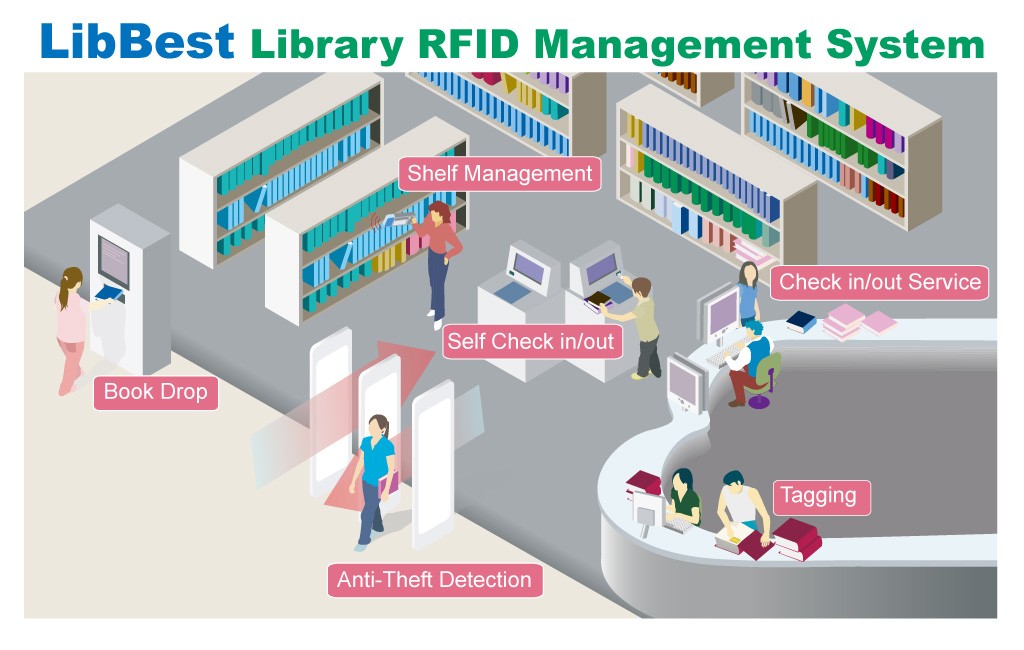Radiant Sensors’ revolutionary passive Anti-Tamper Library RFID labels were designed specifically with the labels and watch industry in mind, and has been proven to work effectively in any challenging label environment. In Europe, the first public library to use Library RFID labels were the one in Hoogezand-Sappemeer, the Netherlands, in 2001, where borrowers were given an option. Worldwide, in absolute numbers, RFID is used most the United States (with its 300 million inhabitants), followed by the United Kingdom and Japan. It is estimated that over 30 million library items worldwide now contain RFID tags, including some in the Vatican Library in Rome. Since Library RFID labels can be read through an item, there is no need to open a book cover or DVD case to scan an item. Since RFID tags can also be read while an item is in motion, using RFID readers to check-in returned items while on a conveyor belt reduces staff time.
A 2004 Dutch estimate was that a library which lends 100,000 books per year should plan on a cost of €50,000 (borrow- and return-stations: 12,500 each, detection porches 10,000 each; tags 0.36 each). RFID taking a large burden off staff could also mean that fewer staff will be needed, resulting in some of them getting fired, but that has so far not happened in North America where recent surveys have not returned a single library that cut staff because of adding RFID.
A concern surrounding RFID in libraries that has received considerable publicity is the issue of privacy. Because Library RFID labels can in theory be scanned and read from up to 350 feet (100 m), and because RFID utilizes an assortment of frequencies (both depending on the type of tag, though), there is some concern over whether sensitive information could be collected from an unwilling source. However, library RFID labels do not contain any patron information, and the tags used in the majority of libraries use a frequency only readable from approximately ten feet.
Removing of the tags could be made difficult if they are so small that they fit invisibly inside a page, possibly put there by the publisher. In February 2008, ThingMagic announced a partnership with Dewalt and Ford to equip 2009 Ford F-150, F-Series Super Duty pickups and E-Series vans with an embedded RFID asset tracking system enabled by ThingMagic’s Mercury5e readers.
A school in Doncaster, England is piloting a monitoring system designed to keep tabs on pupils by tracking radio chips in their uniforms.St Charles Sixth Form College in West London, England, started September, 2008, is using an RFID card system to check in and out of the main gate, to both track attendance and prevent unauthorized entrance. The technology in this system is an RFID interrogator antenna in the dressing room and electronic product code RFID tags on the apparel item.







